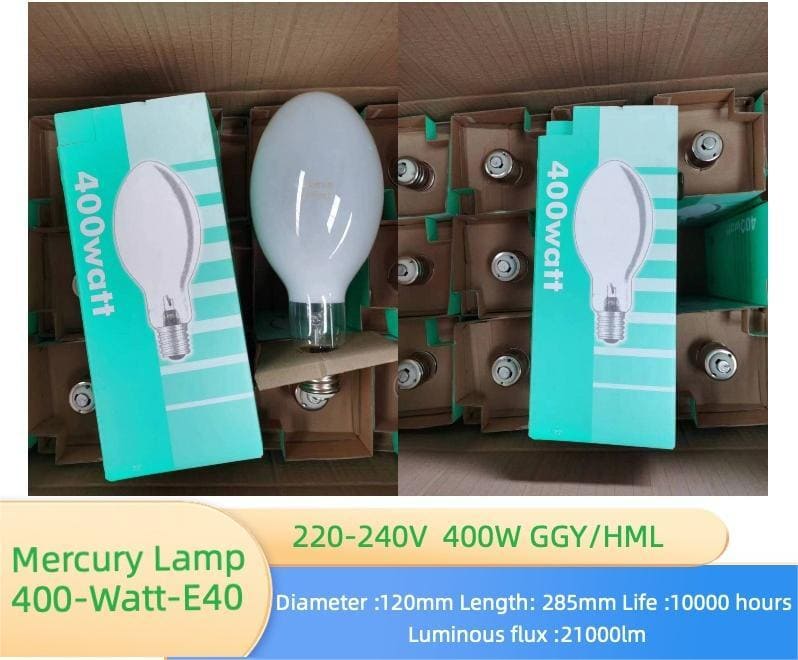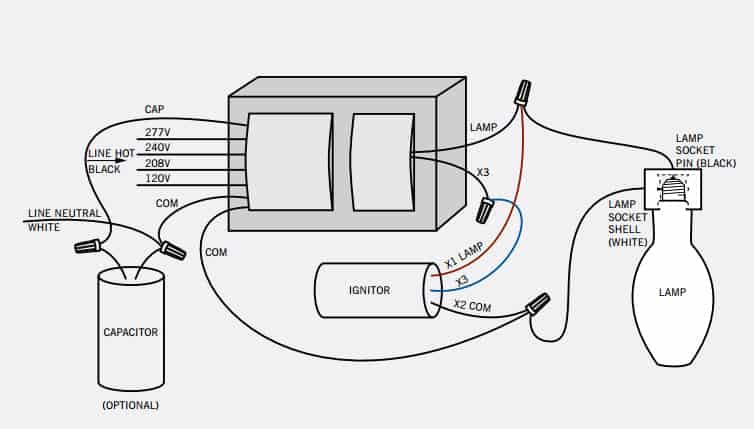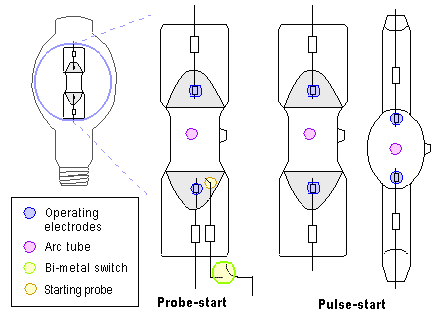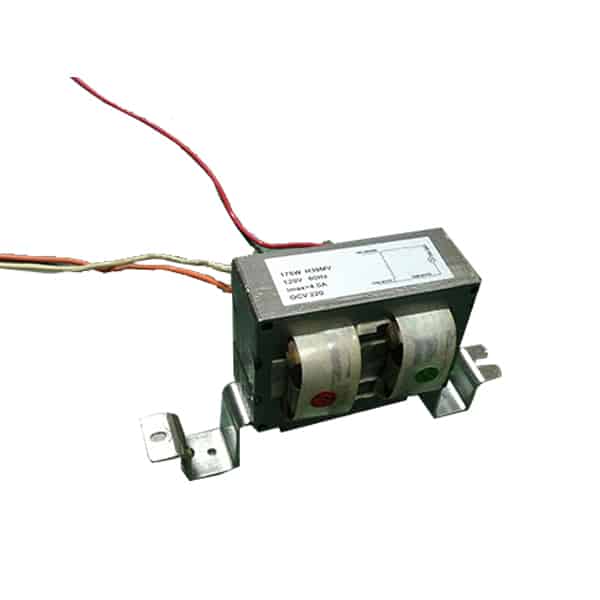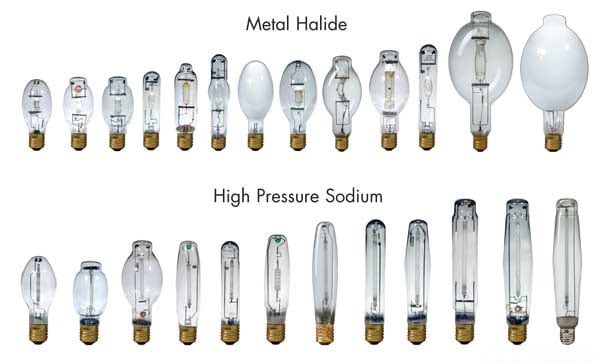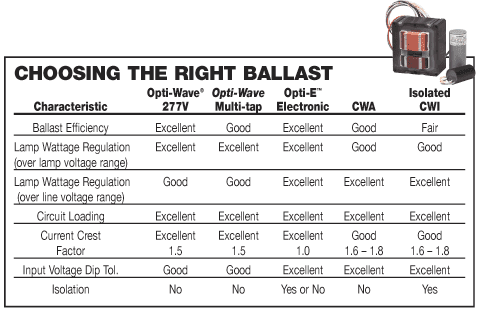Mercury vapor lamps are used a lot for big areas and outdoor lighting because they work well and make a lot of light. But, they use mercury, which is a dangerous heavy metal, so they can be a problem for people and the environment. If you don’t use these lights the right way, get rid of them the right way, or handle them safely, they can be a big problem for your health and the environment.
Mercury vapor lamps can be a problem because they have mercury inside them, and mercury is bad for the air and the environment. To keep these risks low, it’s important to use these lights the right way, use them safely, and get rid of them the right way.
To understand the dangers of mercury vapor lamps, you need to know how they work, what the risks are, and how to use and get rid of them safely.
How Mercury Vapour Lamps Work
Mercury vapour lamps with ballasts operate by producing light through an electrical discharge in mercury vapor, housed within a glass arc tube. When the lamp is powered on, an electric current passes through the mercury vapor, generating ultraviolet (UV) light. This UV light then interacts with a phosphor coating on the inner surface of the lamp, converting the UV rays into visible light.
These lamps are commonly used in large-scale applications such as street lighting, industrial spaces, and sports arenas due to their ability to produce intense, bright light. In fact, mercury vapour lamps have been a staple in outdoor lighting for decades because of their relatively long lifespan and energy efficiency compared to older incandescent technologies.
While mercury vapour lamps have these advantages, the use of mercury vapor inside the lamp is what raises concerns. Mercury is a hazardous substance, and any leakage or exposure can lead to serious health risks.
Mercury Exposure and Health Risks
Mercury Content in the Lamps
Mercury vapour lamps contain a small amount of mercury in the form of a gas inside the sealed glass arc tube. Although the quantity of mercury used is minimal (typically around 10 to 50 milligrams per lamp), even a small amount of mercury can be harmful if the lamp is broken or disposed of improperly. Once the lamp breaks, mercury vapor can be released into the air, where it becomes an inhalation risk.
Mercury is classified as a toxic heavy metal that can accumulate in the body over time, leading to significant health problems. It is especially harmful when inhaled or ingested, as it can affect the nervous system, lungs, kidneys, and other organs.
Health Risks of Mercury Exposure
Mercury vapour is most dangerous when inhaled, as it can quickly pass into the lungs and bloodstream. Acute exposure to mercury vapour can cause symptoms such as coughing, shortness of breath, chest pain, headaches, nausea, and eye or throat irritation. In severe cases, exposure to high levels of mercury vapour can lead to lung damage, respiratory failure, and death.
Chronic exposure to low levels of mercury, which can occur if broken lamps are not cleaned up properly, can cause long-term health effects, including damage to the nervous system. Symptoms of long-term mercury exposure include:
- Tremors and muscle weakness
- Memory loss and difficulty concentrating
- Mood swings or irritability
- Insomnia
- Loss of coordination
Mercury exposure is particularly dangerous for children, pregnant women, and fetuses, as it can affect brain development and lead to cognitive issues. Pregnant women exposed to mercury may also risk harming the development of their unborn child, potentially leading to birth defects.
Environmental Risks of Mercury Vapour Lamps
Environmental Contamination
Mercury vapour lamps also pose a significant environmental risk if they are not disposed of properly. When broken or discarded in landfills, mercury can leach into the soil and water, contaminating the surrounding ecosystem. Once in the environment, mercury can enter the water supply and convert to methylmercury, a highly toxic form that bioaccumulates in fish and other aquatic organisms.
As a result, mercury contamination in water bodies can enter the food chain, affecting wildlife and humans who consume contaminated fish or seafood. This is especially concerning for communities that rely heavily on fishing for food and livelihood.
Bioaccumulation and Wildlife Impact
Methylmercury is particularly dangerous because it accumulates in the tissues of organisms over time, a process known as bioaccumulation. Predators at the top of the food chain, such as large fish, birds, and mammals, tend to accumulate higher concentrations of mercury in their bodies. This can lead to health issues for wildlife, including reproductive failure, behavioral changes, and, in severe cases, death.
Governments worldwide have implemented regulations to mitigate the environmental risks associated with mercury vapour lamps. In many countries, strict guidelines are in place for the recycling and disposal of mercury-containing lamps to prevent mercury from entering landfills and the environment.
Are Mercury Vapour Lamps Safe for Everyday Use?
Safe Usage Guidelines
While mercury vapour lamps can be dangerous if mishandled, they are generally safe for everyday use when proper precautions are followed. Most of the risks associated with these lamps arise from improper handling, breakage, or disposal. To minimize the risk, users should ensure that lamps are properly installed and protected with shatterproof covers or enclosures to prevent accidental breakage.
Using mercury vapour lamps in well-ventilated areas also reduces the risk of exposure to mercury vapours. If a lamp does break, immediate and proper cleanup is crucial to avoid inhalation of mercury vapor.
Potential for Harm
The most significant risks associated with mercury vapour lamps occur when they break or are disposed of improperly. A broken mercury vapour lamp can release mercury into the air, posing an immediate health risk to anyone nearby. For this reason, it’s important to handle these lamps with care, especially when installing or replacing them.
Additionally, when the lamps reach the end of their lifespan, they should not be disposed of in regular trash. Instead, they should be taken to a recycling facility that is equipped to handle hazardous waste, where the mercury can be safely extracted and recycled.
Safer Alternatives
Given the potential dangers of mercury vapour lamps, many lighting users are now turning to safer alternatives such as LED and fluorescent lamps. LED lights, in particular, are mercury-free and offer significant advantages in terms of energy efficiency, lifespan, and environmental safety. While they may have a higher initial cost, LEDs provide long-term savings and reduce the need for hazardous materials like mercury.
What to Do If a Mercury Vapour Lamp Breaks
Immediate Steps
If a mercury vapour lamp breaks, it is essential to take immediate action to prevent mercury exposure. Here’s a step-by-step guide on how to handle the situation safely:
- Ventilate the Area: Open windows and doors to allow fresh air to circulate and disperse any mercury vapours that may be present.
- Leave the Room: Have people and pets leave the area for at least 15 minutes while the room airs out.
- Avoid Direct Contact: Do not touch broken glass or mercury with bare hands. Wear disposable gloves and use a piece of cardboard to carefully scoop up the broken pieces and mercury droplets.
- Clean Up Properly: Use sticky tape to pick up any remaining small glass shards or mercury. Do not vacuum the area, as this can spread mercury particles through the air.
- Contain the Waste: Place all broken pieces and cleaning materials in a sealed container or plastic bag. Label it as hazardous waste.
Proper Disposal
Once the broken lamp has been cleaned up, it is important to dispose of it properly. Mercury vapour lamps should never be thrown in regular trash bins. Instead, they should be taken to a recycling facility or hazardous waste collection center that can safely process mercury-containing products. Many local governments offer collection services or designated drop-off points for such items.
Health Monitoring
After potential exposure to mercury vapours, it’s important to monitor for any symptoms of mercury poisoning, such as coughing, headaches, dizziness, or nausea. If you experience any symptoms, seek medical attention immediately. It’s also wise to inform a healthcare professional of the exposure, especially for individuals with pre-existing health conditions, children, or pregnant women.
Final Words
Mercury vapor lamps can be a problem if you don’t use them right or throw them away the wrong way. There are real safety concerns about mercury and also about hurting the environment. But, if you use these lights right, take safety seriously, and dispose of them the right way, you can keep these risks to a minimum.
If you’re worried about the dangers of using mercury vapor lamps, think about switching to safer lights that don’t have mercury, like LED lights. If you handle mercury vapor lamps the right way and get rid of them safely, you can keep both yourself and the environment safe from mercury.

